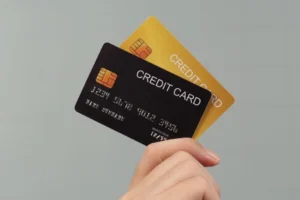In today’s consumer-driven society, where credit is readily available and instant gratification is often just a swipe away, the concept of paying in full at the time of transaction may seem outdated or even impractical.
However, developing this habit can be a powerful tool for financial stability, personal growth, and long-term economic well-being.
Let’s explore the multifaceted approach to cultivating the habit of paying in full, examining its benefits, challenges, and strategies for successful implementation in various aspects of life?
Understanding the Concept of Paying in Full
Paying in full, also known as using cash or debit-based transactions, refers to the practice of only making purchases with money you currently have available, rather than relying on credit or future income.
This approach extends beyond just using physical cash; it encompasses any payment method that immediately deducts the full amount from your available funds, including debit cards, bank transfers, and digital wallets linked directly to your bank account.
The core principle is simple: if you can’t afford to pay for something entirely at the moment of purchase, you don’t buy it. This contrasts sharply with credit-based purchases, where you can acquire goods or services now and pay for them later, often with added interest.

The Benefits of Paying in Full
The advantages of adopting a pay-in-full mentality are numerous and far-reaching. Firstly, it promotes financial clarity and accountability.
When you’re limited to spending only the money you currently possess, you gain a crystal-clear understanding of your financial boundaries. This clarity can be instrumental in preventing overspending and impulsive purchases, as each transaction requires a conscious decision about whether the item is worth the immediate cost.
Secondly, paying in full eliminates the burden of debt and interest payments. Credit card debt, in particular, can accumulate rapidly, with high interest rates compounding the original purchase price. By avoiding these interest charges, you effectively pay less for everything you buy, allowing your money to go further and potentially increasing your savings rate.
Moreover, this habit fosters a more mindful approach to consumption. When each purchase requires immediate payment, you’re more likely to carefully consider the value and necessity of your acquisitions. This heightened awareness can lead to more intentional spending habits, aligning your purchases more closely with your values and long-term goals.
From a psychological perspective, paying in full can reduce financial stress and anxiety. The peace of mind that comes from knowing you’re not accruing debt with each purchase can be liberating. It eliminates the nagging worry about future bills and can contribute to overall mental well-being.
Lastly, this approach can significantly improve your long-term financial health. By avoiding debt and potentially increasing your savings rate, you’re better positioned to build an emergency fund, invest for the future, and achieve major financial milestones such as homeownership or a comfortable retirement.
Challenges in Adopting the Pay-in-Full Habit
While the benefits are clear, transitioning to a pay-in-full lifestyle is not without its challenges. One of the primary obstacles is the prevalence of credit-based systems in modern society. Many services, from car rentals to hotel bookings, often require a credit card for reservations or deposits. This can make it challenging to rely solely on cash or debit transactions.
Another significant hurdle is the psychological adjustment required. For those accustomed to credit-based purchases, the immediacy of paying in full can feel restrictive or even anxiety-inducing. The ability to delay payment or spread costs over time can be comforting, even if it’s not financially optimal in the long run.
Additionally, there’s the challenge of breaking ingrained habits and resisting societal pressures. In a culture that often equates spending with status or happiness, choosing to limit purchases to what you can afford in the moment can feel countercultural.
Practically speaking, paying in full requires more meticulous budgeting and financial planning. Without the buffer of credit, you need to ensure that your cash flow aligns with your expenses, which can be particularly challenging for those with irregular income or unexpected financial demands.
Strategies for Developing the Pay-in-Full Habit
Developing the habit of paying in full requires a multifaceted approach, combining practical strategies with psychological techniques. Here are several key strategies to help cultivate this financial habit:
- Start with a Clear Financial Assessment: Begin by gaining a comprehensive understanding of your current financial situation. This includes mapping out all your income sources, regular expenses, debts, and savings. This clarity will serve as the foundation for your new financial approach.
- Create a Realistic Budget: Based on your financial assessment, develop a detailed budget that allocates your income across various expense categories. Ensure that your budget is realistic and includes some flexibility for unexpected costs.
- Build an Emergency Fund: Before fully transitioning to a pay-in-full lifestyle, it’s crucial to establish an emergency fund. This financial buffer can help you handle unexpected expenses without reverting to credit use.
- Gradually Transition Away from Credit: If you’re currently reliant on credit, make a plan to gradually reduce your credit usage. This might involve paying off existing debts and consciously choosing cash or debit for an increasing percentage of your purchases.
Others strategies
- Use Cash Envelopes or Digital Equivalents: The envelope budgeting system, where you allocate cash to different expense categories, can be a powerful tool for adhering to a pay-in-full lifestyle. Digital apps that mimic this system can serve the same purpose for those who prefer electronic transactions.
- Practice Delayed Gratification: Train yourself to wait before making purchases, especially for non-essential items. This pause can help you distinguish between genuine needs and impulsive wants.
- Find Alternative Rewards: If you’re used to the rewards associated with credit card use, find alternative ways to reward yourself for responsible financial behavior. This could include setting savings goals and planning small celebrations when you reach them.
- Educate Yourself on Personal Finance: Continuously expand your financial knowledge. Understanding concepts like compound interest, inflation, and investment basics can reinforce the benefits of paying in full and motivate you to stick with the habit.
- Use Technology Wisely: Leverage budgeting apps, automatic savings features, and spending trackers to support your pay-in-full lifestyle. These tools can provide real-time insights into your financial status and help you make informed decisions.
- Surround Yourself with Support: Share your financial goals with friends and family who can offer encouragement. Consider joining online communities or local groups focused on financial responsibility.
Implementing the Pay-in-Full Habit in Various Life Aspects
Adopting a pay-in-full mentality extends beyond day-to-day purchases and can be applied to various aspects of life:
Housing: While paying cash for a home is unrealistic for many, applying the pay-in-full principle might mean saving for a larger down payment or choosing a more affordable home to minimize mortgage debt.
Transportation: Consider saving to buy a car outright rather than financing, or opt for more affordable transportation options that you can pay for in full.
Education: Explore scholarships, work-study programs, or part-time work to minimize student loans. If loans are necessary, borrow only what’s absolutely needed.
Travel: Plan trips based on what you can afford to pay upfront, potentially choosing closer destinations or budget-friendly options.
Healthcare: While emergencies can’t always be anticipated, building a health savings account or setting aside funds for routine care can help you manage medical expenses without relying on credit.
Maintaining the Habit Long-Term
Sustaining the pay-in-full habit requires ongoing commitment and adaptability. Regularly review and adjust your budget to ensure it aligns with your current financial situation and goals. Celebrate your successes, no matter how small, to reinforce positive behavior. Be prepared for setbacks and view them as learning opportunities rather than failures.
As your financial situation improves, resist the temptation to inflate your lifestyle. Instead, focus on increasing your savings rate and investing in your future. Remember that the ultimate goal of paying in full is not deprivation, but rather achieving greater financial freedom and peace of mind.
Conclusion
Developing the habit of paying in full is a powerful step towards financial independence and stability. While it requires discipline, planning, and sometimes short-term sacrifices, the long-term benefits are substantial.
By embracing this approach, you not only gain better control over your finances but also cultivate a mindset of intentional living and responsible consumption. In a world where debt is often normalized, choosing to pay in full is a radical act of self-empowerment, setting the foundation for a more secure and fulfilling financial future.






